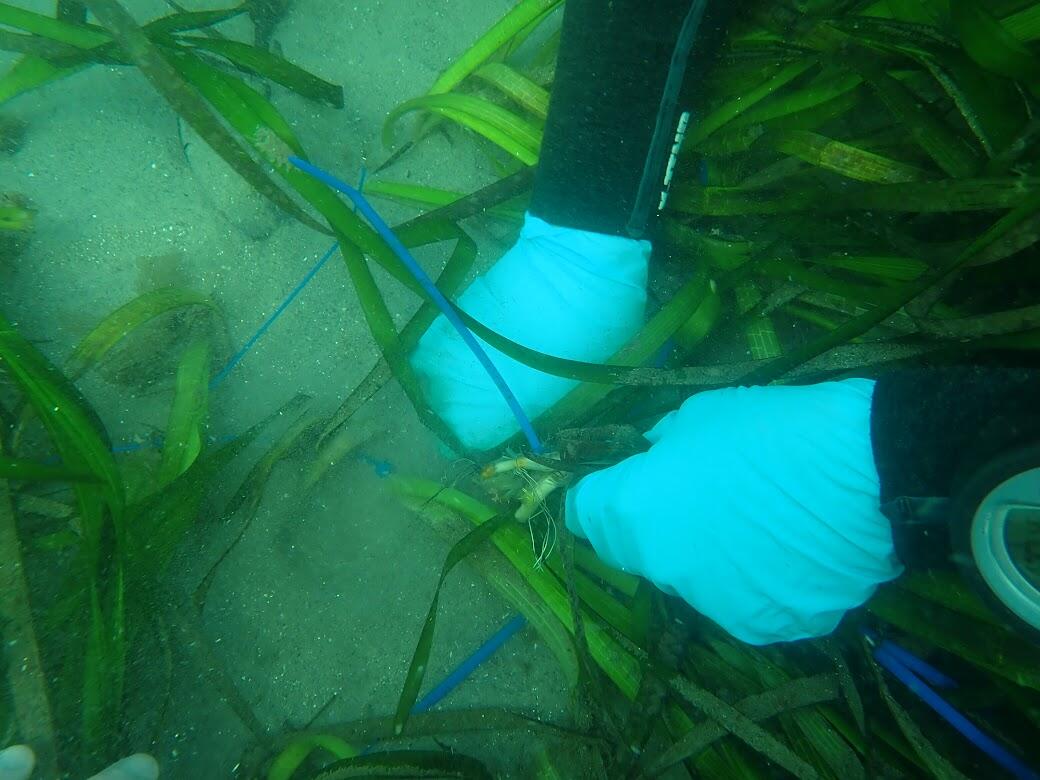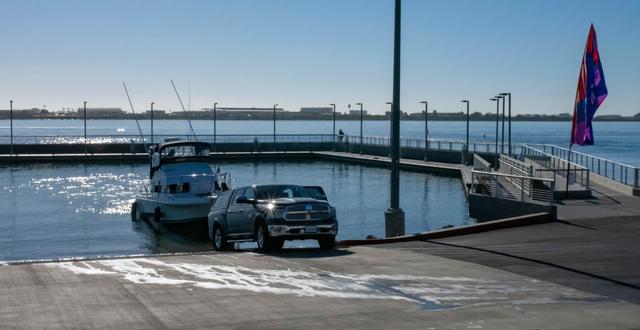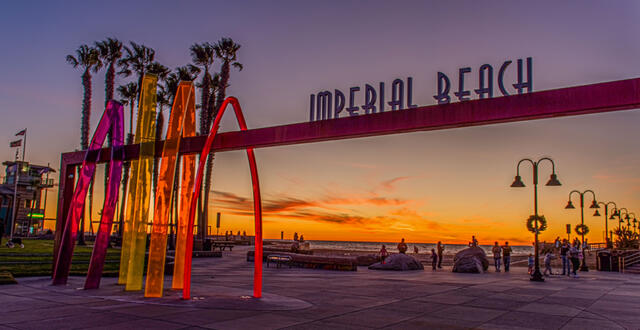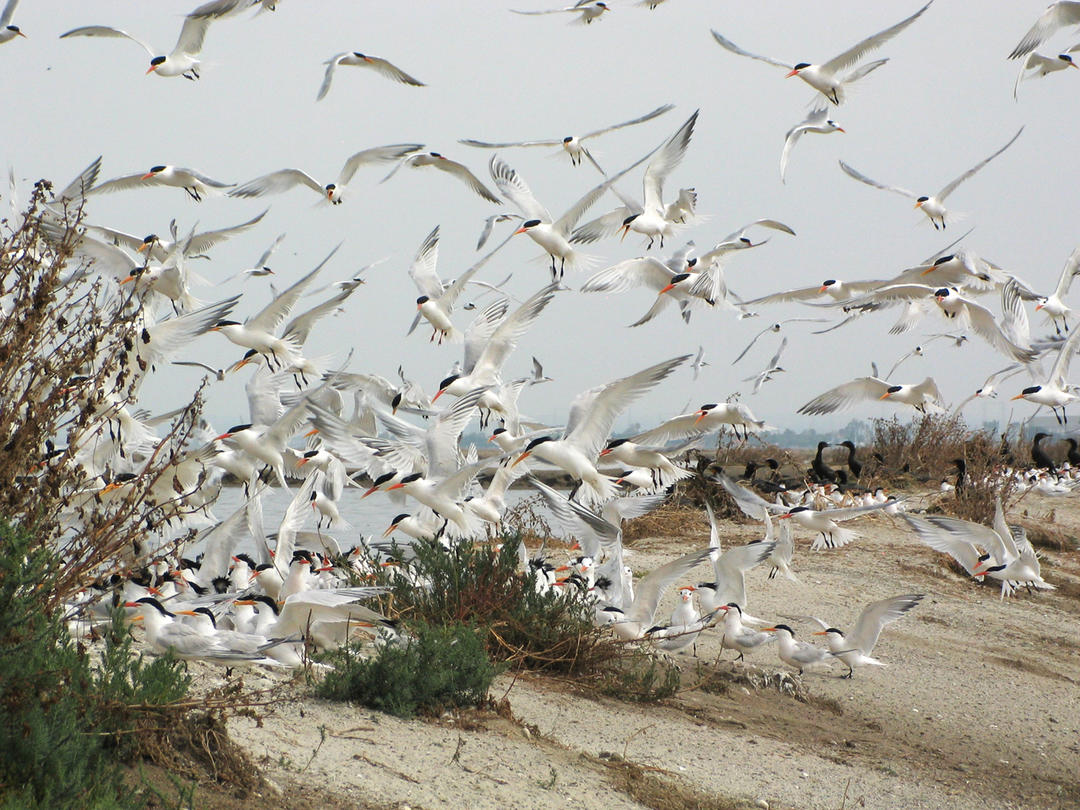Natural Resources of the Bay
With its warm, nutrient-rich shallow waters, intertidal shorelines, shelter from waves, and relative protection from marine predators, San Diego Bay provides valuable habitat that serves as nursery, breeding, and resting grounds for an abundance of marine species. It is a critical stopover point for migratory birds along the Pacific Flyway, and its extensive eelgrass beds support fisheries productivity unmatched by most habitats.
The Port is committed to preserving and improving a vibrant and healthy environment supporting an abundance of diverse natural resources throughout San Diego Bay and the tidelands. The Environmental Conservation department regularly coordinates localized and bay-wide monitoring efforts to gauge the status of natural resources throughout the bay including eelgrass beds, bird species and fish surveys, as well as annual monitoring of sensitive and/or endangered species such as the California least tern, Ridgway's rail and green sea turtles.
San Diego Bay supports:
- Over 300 species of marine and coastal birds
- Over 640 species of marine invertebrates
- Over 100 species of marine fishes
- Over 45 species of algae
- 11 federal/state threatened or endangered species and 50 special status species
- At least 4 species of marine mammals
- 823 acres of salt marsh habitat
- 978 acres of tidal flats
- 1,500-2,000 acres of eelgrass beds (annual fluctuation)
- 9,331 acres of mud and sand bottom assemblages in shallow to deep water
Monitoring Reports
These reports are available through the "Monitoring Reports" link in the taskbar at the top of the page:
- Annual California Least Tern Reports
- Annual Ridgway's Rail Propagation Program Reports
- Green Sea Turtle Monitoring Reports
- Bay-wide Eelgrass Surveys
- Bay-wide Fish Surveys
- Bay-wide Bird Surveys
What is Blue Carbon?
Blue carbon refers to carbon captured by the world's oceans and coastal ecosystems. All blue carbon ecosystems, such as seagrass beds, tidal salt marshes, and mangroves, are carbon sinks, meaning they can sequester and store large amounts of carbon in their plants and soils. Seagrasses, like the native eelgrass beds found in San Diego Bay, can store twice as much carbon as forests on land.
In addition to storing carbon, blue carbon ecosystems provide multiple environmental co-benefits. They provide food and nesting areas for birds, act as nursery habitat and shelter for juvenile fish, and improve water quality. They also can buffer against storm surge and sea level rise, helping protect shorelines from erosion and flooding.
It’s important to protect and conserve our coastal ecosystems so the carbon they store remains sequestered and they continue to provide ecosystem services. Exposure to the air through degradation and development can release large amounts of carbon back into the atmosphere.

Frequently Asked Questions
2021 - 2023 San Diego Bay Eelgrass Blue Carbon Study Key Findings
- The bay has nearly 2,600 acres of eelgrass
- The bay’s eelgrass beds currently contain 1.7 million metric tons of CO2
- South Bay is a carbon storage hot spot
What is the MARAD Maritime Environmental and Technical Assistance program?
In 2021, the Port partnered with the U.S. Maritime Administration and their Maritime Environmental & Technical Assistance Program on the first-ever assessment of carbon storage in San Diego Bay’s eelgrass beds. The San Diego Bay Eelgrass Blue Carbon Study provides a baseline for understanding carbon storage in the bay and informs potential opportunities to mitigate greenhouse gas emissions.
What’s Next?
It’s important to understand the carbon sequestration and storage properties of San Diego Bay’s eelgrass beds and other coastal habitats and how they can help reduce the impacts of climate change. The Port and the Maritime Administration, along with the U.S. Navy, are continuing blue carbon research to better understand how ports, the maritime sector, and the Navy can offset greenhouse gas emissions through appropriate management of eelgrass.
The Year 2 follow-up study planned for 2022-2023 will shed light on the habitats’ annual sequestration abilities to facilitate a more direct estimate of annual emissions versus annual seagrass carbon sequestration. Look for our next report in late 2023.
Year 2 Project Goals
The Year 2 study aims to assess the bicarbonate pathway (i.e., how carbon moves in & out of eelgrass ecosystems) and will explore the following:
- Repeated soil carbon sampling to estimate carbon sequestration rates in collaboration with the Navy.
- Calculate primary production rates, carbon burial rates, and detrital export rates.
- Conduct a grain size analysis & nutrient deficiency study.
What's Happening at the Port?

Waterfront Development
The new Shelter Island Boat Launch Facility was officially dedicated on January 22, 2019 with a ribbon-cutting ceremony attended by community leaders and boating enthusiasts. The facility opened up to the public on December 21, 2018. It is now a…

Experiences
The Imperial Beach Pier is a regional attraction and widely recognized landmark for the City of Imperial Beach and Port of San Diego, and is a key part of the city’s downtown and economic vitality, which has gone through a revitalization with a new…

Environment
The Port of San Diego is proposing to construct 76.5 acres of coastal wetland habitat at Pond 20 to create a mitigation bank, the first of its kind for San Diego Bay. Pond 20, a former salt evaporation pond in south San Diego Bay, is currently vacant…
